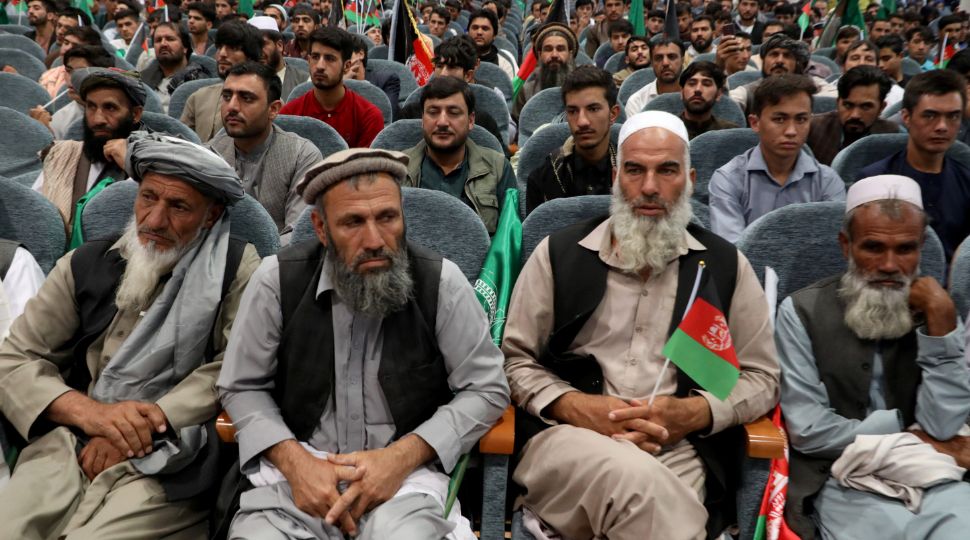Afghanistan Ahead of the Next Turbulent Presidential Election

The presidential election in Afghanistan has been postponed three times already due mainly to the poor security conditions in the country. The current government of President Ashraf Ghani has been insistent on carrying them out. He has the best chance of being re-elected and renewing his democratic mandate. Apart from Ghani, 15 other candidates stand for election, including his main rival, Chief Executive Abdullah Abdullah, or former mujahedin leader Gulbuddin Hekmatyar. There is no representative of the Taliban, who have threatened to attack everyone participating in the election process.
According to the Independent Election Commission (IEC) of Afghanistan, more than 9.6 million Afghans are registered to vote. Though the presidential campaign officially started on 28 July, it was not clear until recently whether the election would even go ahead. The uncertainty stemmed not only from the deteriorating security condition but even more from the U.S. talks with the Taliban. There was widespread suspicion that a deal would mean the two sides would push for cancelling the elections to allow for the formulation of an interim government with the involvement of the Taliban. The abrupt end to the negotiations by U.S. President Donald Trump on 7 September dispersed such doubts and put the democratic process back on track.
Failed Peace Process
The U.S. started talks with the Taliban on 12 October 2018 when the U.S.’s special envoy for reconciliation in Afghanistan, Zalmay Khalilzad, met representatives of the Taliban in Doha. Since then, nine rounds of talks have taken place in Qatar and the UAE. Although Khalilzad announced in January a “draft agreement” for a final “agreement in principle”, it had to wait until 2 September. According to disclosed information, the deal assumed the “conditional” withdrawal of foreign troops within 16 months, including the departure of 5,400 Americans from five military bases in 20 weeks. In return, the Taliban were to publicly cut ties with Al-Qaeda and guarantee that Afghanistan would not be used in the future to prepare terrorist attacks on the U.S. or its allies. The withdrawal of foreign soldiers was to depend on the progress of future intra-Afghan negotiations and a ceasefire.
The official reason President Donald Trump gave for withdrawing the U.S. at the last minute before the signing of the agreement was the Taliban attack in Kabul on 5 September in which an American soldier and 11 other people were killed. The intensification of hostilities in the final phase of negotiations has undermined the confidence of the U.S. administration in the Taliban as a party interested in peace. At the same time, the agreement has been criticized in the U.S. as not sufficiently protecting American interests and not guaranteeing stability in Afghanistan.
Indeed, both the draft agreement and the negotiations themselves benefited primarily the Taliban, legitimising them as a political force and strengthening their negotiating position in a future power-sharing formula. The mistake in negotiations on the U.S. side was to agree to the marginalisation of the official authorities in Kabul. The Americans did not persuade the Taliban to start talks with the government but agreed to their formula for intra-Afghan talks that would involve various factions, in which the government was just one of them. Though the Taliban met with the Afghan opposition in Moscow in February and May, as well as with members of the government (but privately) in Doha on 6-7 July, they consistently do not recognise the Afghan government nor the current constitution.
The formula of the U.S.-Taliban talks undermined Afghan loyalty to democratic state structures and weakened their resistance against the Taliban. Not surprisingly, the Afghan government welcomed Trump’s decision and recalled that real peace would only be possible if the Taliban “agreed to a ceasefire and began direct talks with the Afghan government”. In turn, the Taliban were surprised by the rejection of the agreement and threatened that the U.S. would suffer the most “negative effects” of this decision. In the following days, however, their chief negotiator expressed the Taliban’s readiness to return to negotiations with the U.S.
Security Challenge
The Afghan elections will take place in even more difficult security conditions than the last presidential elections in 2014 or the parliamentary elections in 2018, which were recognised by the UN as the bloodiest in the country’s history. The Taliban currently control the most territory in the country since 2001 and their strength can be estimated at 50,000 to 70,000 militants. Since announcing a boycott of the election, the Taliban have carried out a series of attacks on election rallies and main candidates, including in July against the former Interior Minister and running-mate of President Ghani, Amrullah Saleh. They have stepped up the violence to try to prevent the elections from even being held and to undermine their results, as demonstrated by the suicide attack of 17 September at President Ghani’s election rally in Parwan Province, in which 26 people were killed.
While in the first half of 2019 the number of civilian casualties of the conflict (about 3,800, including over 1,300 killed and 2,400 wounded) was 27% lower than in a similar period the year earlier and the lowest since 2012, in the following months the trend reversed. In July alone, the UN reported 1,500 civilians killed and injured, making the month the deadliest in many years. According to BBC estimates, an average of 74 people were killed every day in August.
Due to the insecurity, the IEC announced that about 2,000 of the more than 7,000 polling centres will not open on election day. For fear of death, candidates have limited their election campaign and many registered voters will remain at home. This situation also hinders the preparation of polling centres and the supply of biometric machines used to identify voters, which can further serve to undermine the results.
Afghan security forces will be responsible for ensuring security, the number of which is about 272,000, including 180,000 soldiers and 91,200 police—the lowest since 2015. There are still more than 17,000 NATO soldiers (including 330 Poles), though they are officially on a training mission. Afghans also count on several thousand more U.S. soldiers involved in anti-terrorist operations.
Conclusions
The U.S. cancellation of peace talks with the Taliban will mean further intensification of attacks and fighting and enormous difficulties in holding elections. There is a serious risk that low turnout and irregularities in voting or counting votes will undermine the results among the losing candidates and their supporters and deepen political divisions in the country, as happened in 2014. The potential for further internal chaos would strengthen the Taliban militarily and politically, bringing them closer to reassuming full power. Therefore, for the U.S., the EU, and other countries involved in Afghanistan, the priority should be to support Afghan institutions in conducting the elections and the smooth transition to new authorities. Foreign partners can influence the post-election situation by making political support and further economic assistance conditional on the credibility of the voting and recognition of its results by major political forces.
Despite the current threats, the elections are still the best way to renew the authorities’ mandate and strengthen their negotiating position vis-a-vis the Taliban. A political agreement between the Afghan authorities and the Taliban remains the only realistic prospect of ending the war in Afghanistan. The U.S. will probably seek to resume talks with the Taliban after the election. However, to achieve peace, the process this time must be Afghan-led, with the full participation of the government and an immediate ceasefire as a major condition for any agreement. The withdrawal of foreign troops should be the result of the intra-Afghan peace talks, not an incentive for them to start. For NATO countries, including Poland, the lack of clarity about the internal negotiation process in Afghanistan may mean the need to extend the military presence in that country. International support for the new authorities and increased U.S. military pressure on the Taliban would send them the signal that their strategy of ignoring the existing political system and waiting for the withdrawal of foreign troops has been unsuccessful.




